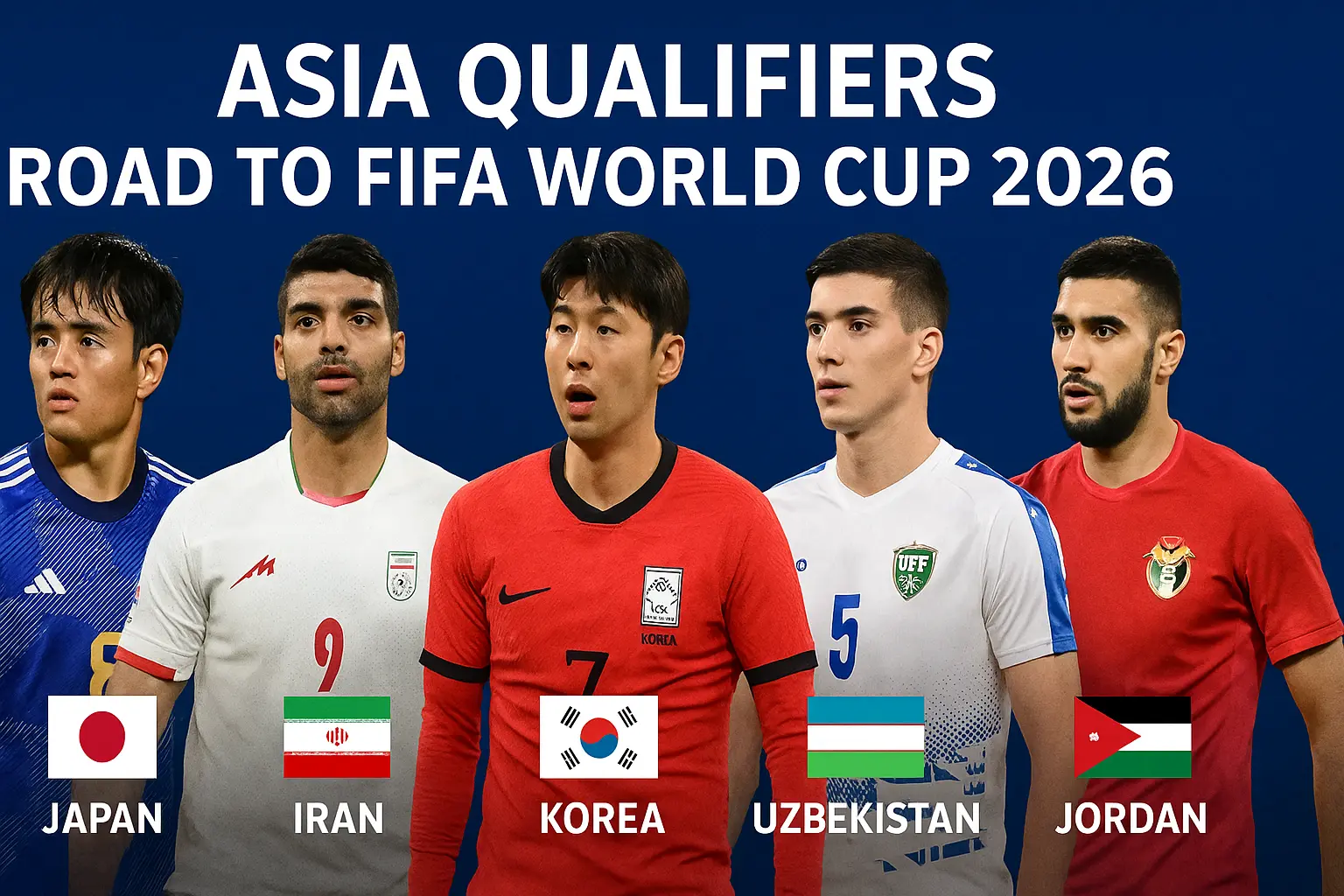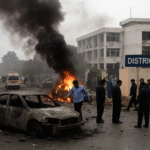From Japan’s dominance to Jordan’s dream debut — how Asian football has arrived on the global stage
The FIFA World Cup 2026 represents a new chapter in football’s evolution.
For Asia, this tournament isn’t just another qualification cycle — it’s a breakthrough moment. The continent now enjoys eight direct qualification spots and one intercontinental play-off berth under the expanded 48-team format, offering more nations the chance to compete on the world’s biggest stage.
Traditional giants like Japan, South Korea, Iran, and Australia have already confirmed their places, while first-time entrants Uzbekistan and Jordan have captured headlines and hearts.
For the Asian Football Confederation (AFC), this is the most powerful representation in its history both in numbers and in quality.
🧭 The Qualification Format
Asia’s qualifying process began in 2023 and stretched across several rounds designed to balance opportunity and merit:
1.Preliminary Round: Lower-ranked nations battled home-and-away ties.
2.Second Round: 36 teams divided into nine groups of four.
3.Third Round: 18 top teams split into three groups; the top two from each qualified directly.
4.Fourth Round & Play-Offs: Remaining contenders now compete for the final two AFC spots, with one more available via the FIFA intercontinental play-off.
In total, Asia could send nine teams to the 2026 World Cup — a first in football history.
📊 Qualified Teams and Current Rankings
By late 2025, six Asian nations had already secured qualification. Each represents a unique footballing identity:
FIFA Rank (2025)*
Nation
Note
#17
🇯🇵 Japan
First team in the world to qualify (March 2025)
#21
🇮🇷 Iran
Seventh consecutive appearance
#23
🇦🇺 Australia
Consistent World Cup performer
#22
🇰🇷 South Korea
11th straight qualification
#64
🇺🇿 Uzbekistan
First-ever qualification
#71
🇯🇴 Jordan
Historic debut appearance
*FIFA World Ranking values based on October 2025 data.
Still competing for the final AFC slots are Qatar, Saudi Arabia, Oman, Iraq, and UAE.
🌟 Key Players Defining Asia’s Rise
🇯🇵 Japan — Precision and Professionalism
•Takefusa Kubo (Real Sociedad) – The creative spark combining vision with pace.
•Kaoru Mitoma (Brighton & Hove Albion) – An agile winger with elite-level dribbling.
•Wataru Endo (Liverpool) – Japan’s midfield anchor and emotional leader.
Japan continues to set the standard for technical discipline and tactical balance.
🇮🇷 Iran — Power, Poise, and Consistency
•Mehdi Taremi (FC Porto) – Iran’s most prolific striker in recent years.
•Sardar Azmoun (AS Roma) – A reliable finisher with aerial strength and control.
“Team Melli” blends European experience with domestic structure — still among Asia’s most dangerous teams.
🇰🇷 South Korea — The Red Devils’ Global Stars
• Son Heung-min (Tottenham Hotspur) – Captain and global icon, redefining Asian leadership in football.
• Lee Kang-in (Paris Saint-Germain) – The new creative core of Korea’s midfield.
South Korea’s squad depth and professionalism make them perennial knockout-stage contenders.
🇺🇿 Uzbekistan — Central Asia’s Breakthrough
•Abdukodir Khusanov (RC Lens) – A fearless defender symbolizing the nation’s new football generation.
Uzbekistan’s historic qualification marks a new frontier for Central Asian football, showing what consistent development can achieve.
🇯🇴 Jordan — Unity Over Stardom
Jordan’s qualification was built not on individual fame but on teamwork, discipline, and belief. Their balanced, counter-attacking style carried them through historic matches and into their first-ever World Cup.
🔍 The Bigger Picture: What’s Driving Asia’s Growth
• Depth and Diversity: The 2026 World Cup will feature the largest-ever Asian contingent.
• Emerging Nations: Jordan and Uzbekistan’s rise proves football’s expanding geography.
• Investment and Infrastructure: AFC federations are upgrading youth systems, coaching standards, and stadiums at record pace.
• Experience vs. Youth: Veterans from Japan and Iran meet the fearless youth of Central Asia, creating a healthy competitive balance.
🇵🇰 Pakistan’s Path Forward
While Pakistan exited early in qualification, the expanded FIFA format keeps hope alive.
With stronger governance at the Pakistan Football Federation (PFF), and renewed AFC support, the nation can build a credible path for future qualification.
Priorities include:
• Reviving the domestic league and club system.
• Establishing national youth academies.
• Promoting international exposure for players.
• Investing in infrastructure aligned with FIFA standards.
The next decade could see Pakistan emerge as South Asia’s most improved football nation.
⏱ What’s Next
• AFC Play-offs: To be completed in early 2026.
• World Cup Draw: Scheduled in Washington D.C., mid-2026.
• Tournament Dates: June 11 – July 19, 2026 across USA, Canada, and Mexico.
If Asia wins its intercontinental play-off, the region will feature nine nations — a landmark in world football history.
🏁 Conclusion
Asia’s journey to the FIFA World Cup 2026 isn’t just about qualification — it’s about transformation.
From Japan’s discipline to Jordan’s courage, and from Son Heung-min’s leadership to Uzbekistan’s historic rise, the continent has evolved into a confident, world-class football power.
For Pakistan and other developing nations, the message is simple: the pathway is longer, but the doors are finally open.
With structure, patience, and belief, the next breakthrough could come from anywhere — even South Asia.










